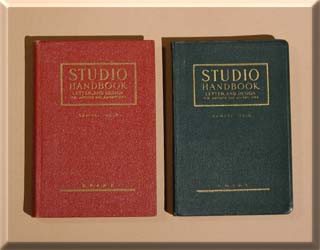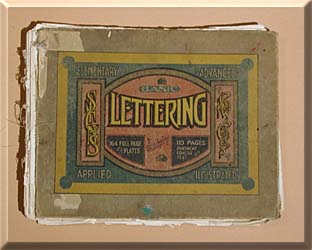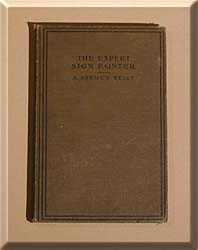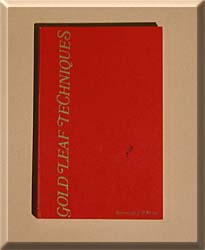|
|

|
11.
Martin: 1000 Showcard Layouts. 1928, 1930, 1984.
|
An amazing book if only from the realization of the
effort it took to produce it! H.C. Martin, a frequent
contributor to Signs of the Times Magazine, was commissioned
to produce a book of 1000 showcard layouts specifically
to be used in a book. He had a very large following
of readers and fans at the time and this book filled
their needs and expectations. While each layout might
not be earth-shattering, they show a keen understanding
of balance, dominance, and rhythm popular with the showcard
craft.
|
|

|
12. Welo: Studio
Handbook. 1927 (1935).
|
Samuel Welo seemed to have picked up where Martin
left off. Actually this book would have been produced
about the same time and they share similar styles of
lettering and layout. This book features numerous hand-lettered
alphabets and several pages of ornaments, dingbats,
and panel layouts.
|
|

|
13. Herberling:
Basic Lettering. 1922.
|
W.A. Heberling was the Instructor of Sign, Scene,
and Pictorial Painting at the Mooseheart Vocational
Institute in Mooseheart, IL. This book was also used
as a textbook, taking beginners through the basics right
up to painted pictorial billboards. In several places,
this books resembles illustrations in the Imelli book,
but not quite as high of quality across the board. It
is probably not as common as books from some of the
larger trade schools.
|
|

|
14. Kelly: The
Expert Sign Painter. 1910 (1922).
|
Probably the least illustrated of all the books in
this list. Ashmun Kelly wrote this book for the technical
side of the sign trade audience. He explains some of
the most complex elements and techniques of the trade
including gilding, mirroring, frosting, and embossing.
For a contemporary sign maker curious as to how things
were done almost 100 years ago, this book is a must.
|
|

|
15. LeBlanc:
Gold Leaf Techniques. 1961 (plus numerous reprints).
|
Raymond J. LeBlanc wrote the quintessential book
on working with goldleaf of the time. With a few revisions
to allow for updated materials, most of the techniques
described in his first book are still being used today.
This book would have been found in almost every sign
kit of any gilder since that period. While there are
some very interesting photographs of LeBlanc's work
in the book, the technical writing places it as a must
have book and probably most read of any book in this
list.
|
|
|
Home
| News | Exhibits
| Links
| FAQ
| Contact Us
|
|